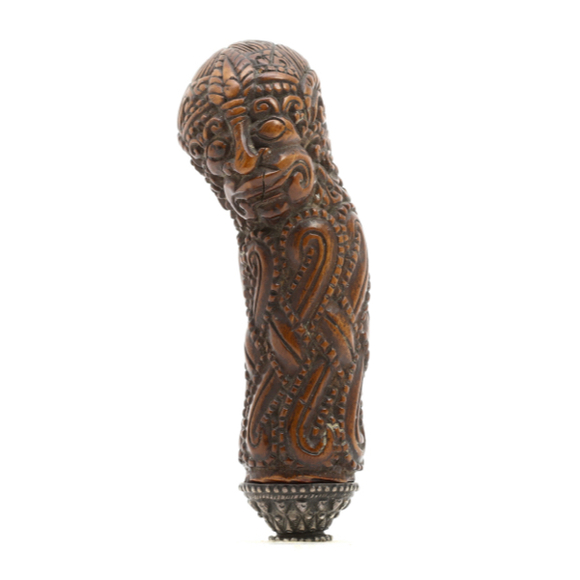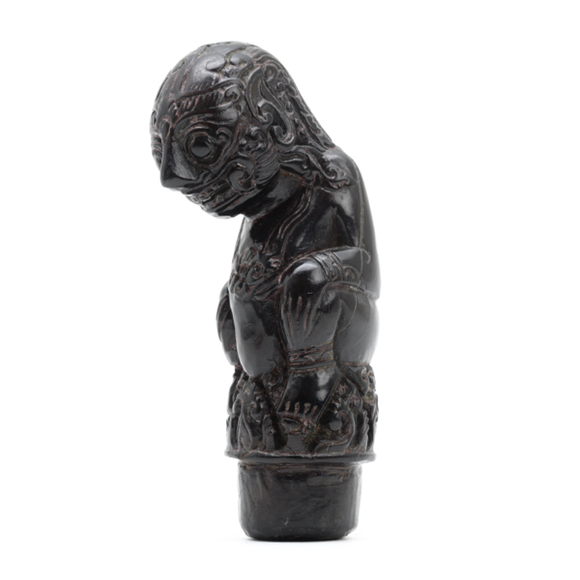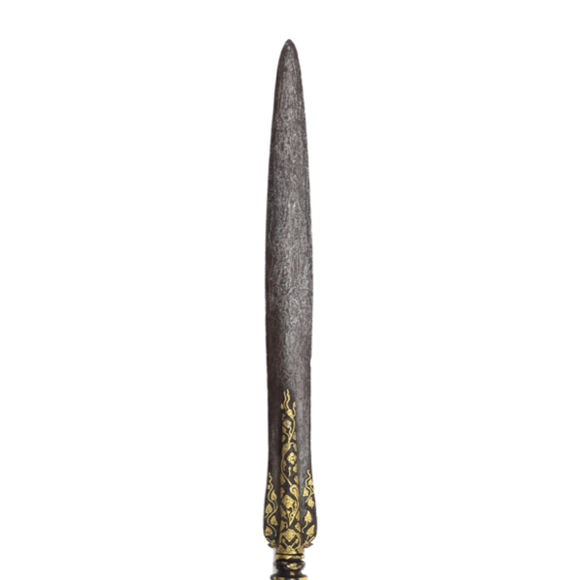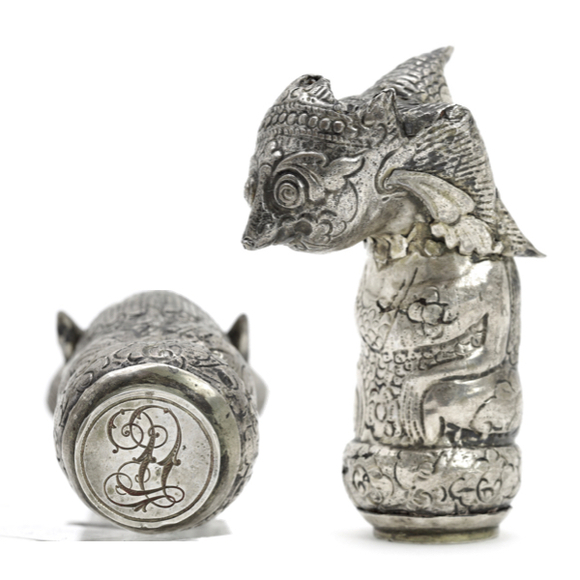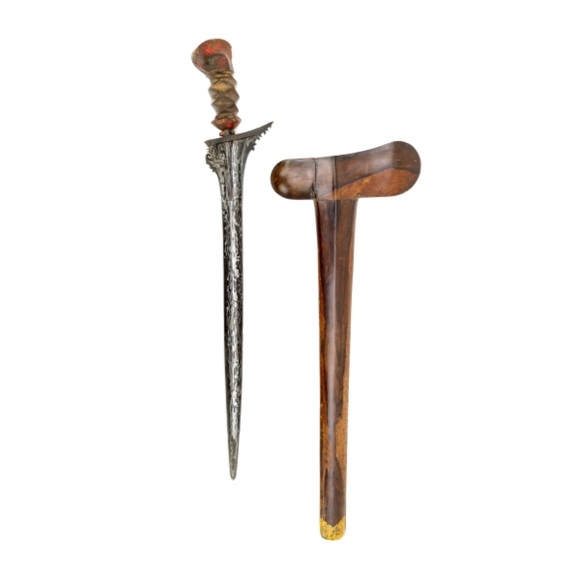19th century, probably originating from Cirebon.

Sheathed 48.5 cm
Keris 47.8 cm
37 cm
Base 13.5 mm
Middle 3.5 mm
5 cm from tip 2 mm
Ganja 13.5 mm
Middle 3.5 mm
5 cm from tip 2 mm
199 grams
4 cm from base of blade
Iron steel, nickel (pamor), wood, brass, gold, enamel
Solo (Surakarta)
Central Java, Indonesia
Early 19th century
Scandinavian private collection
Characteristics in keris collector jargon
(With plain English below)
Hulu; nunggak semi with kuncung / citak.
(Hilt; stylized Islamic hilt (its literal translation refers to a tree trunk sprouting again) with small protrusion near the top.)
Selut; gilt and enameled.
(Bolster.)
Mendak; parijoto.
(Ferrule; "swollen rice" type.)
Bila; 11 luk
(Blade; 11 curves)
Description
A nice court keris from Surakarta, also known as Solo. The lion and the elephant represent the merging of the Majapahit Kingdom (elephant) with the Mataram Kingdom (lion/tiger). The blade has an old finish, not the harsh etchings so popular today.
The scabbard is made of a single piece of striped wood, hollowed out from the top. It is not covered with any metal to let the wood speak for itself; elegant and understated, you have to look twice to see the excellence in its manufacture.























